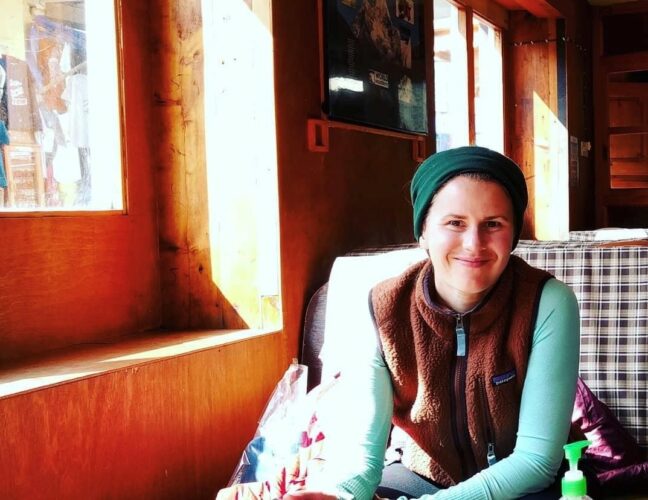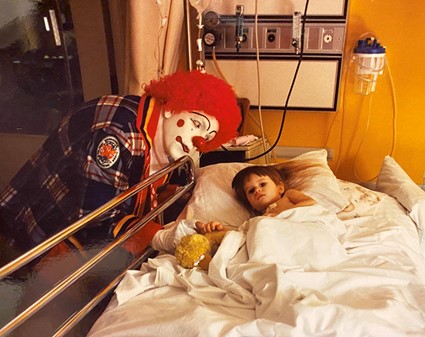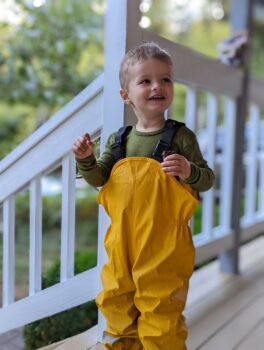PART TWO: From witnessing exceptional care and compassion given to children in their own lives, to receiving treatment first-hand, this weekly series features Seattle Children’s employees and the life experiences that drove them to pursue careers in healthcare.

Meagan Newman’s relationship with Seattle Children’s began 30 years ago.
At just 3 years old, she was diagnosed with acute lymphoblastic leukemia (ALL) and spent the next two and a half years in and out of the hospital for treatment.
“At the time, my dad was an anesthesia resident at the hospital and he suddenly had a glimpse into the day-to-day challenges of managing care for a child with cancer,” she explained.
Newman’s mom made the tough decision to quit her job as a nurse to care for Meagan while her dad tried to manage finishing his residency. Part of their daughter’s medical treatment included a lumbar puncture (LP), also known as a spinal tap, which places a needle in the spine to remove fluid.
“During one of my first LP’s, my dad was horrified to learn that it wasn’t protocol to sedate children for the procedure,” Newman recalled. “After having to assist in holding me down, he made the decision to work on changing the protocol for sedating pediatric cancer patients undergoing lumbar punctures.”
Dr. Charlie Haberkern, a long-time Seattle Children’s anesthesiologist, worked closely with Newman’s father to ensure this care would be as compassionate, caring and comfortable as possible for current and future patients.
“They started sedating me for lumbar punctures, and the interest from other cancer families to have the same done for their children quickly grew,” she said. “I’ve been told this helped shape what is now the standard protocol for care for cancer patients receiving certain procedures and treatments within the Cancer and Blood Disorders Center.”

Newman’s stepbrother also has a long history at Seattle Children’s and was diagnosed with cancer as a toddler in 1992.
“He was the first cancer patient with acute respiratory distress syndrome to survive after being put on an oscillator ventilator at Seattle Children’s,” Newman added. “Our families bonded through the extensive support that fellow cancer families provide each other, and years later our parents ended up marrying.”
Her beloved sibling unfortunately relapsed in elementary school and was later diagnosed with a glioblastoma as a teenager. He passed away in 2009.
Three years after processing the devastating loss, Newman decided that she wanted to give back. She started volunteering at Seattle Children’s in a therapy pool, all while making the personal decision to go back to nursing school for a career change.
“Soon, I was hired into the Pediatric Intensive Care Unit (PICU) as a certified nursing assistant where I worked for four years while in school,” she said. “The PICU hired me into a new graduate nurse position in 2017, where I worked for two years.”
Several years later, Newman’s role shifted to the Post Anesthesia Care Unit (PACU) working as a relief charge nurse and alongside the Mobile Anesthesia Sedation Team.
That same year, she was excited to learn that she was expecting her first child. However, Newman soon realized how connected her family would be once again to Seattle Children’s.
“At our routine 20-week anatomy scan, they found a congenital lung mass,” Newman shared. “We were immediately referred to the Seattle Children’s Fetal Care and Treatment Center where we saw a multidisciplinary team to evaluate our son, Max, in-utero. Prior to this, I was not familiar with this center or the teams that rally around families antepartum when a baby has a suspected anomaly.”
She recalls the days between finding the mass and being seen at the Fetal Care Center as the worst four days of her life, however she received some promising news.

“During our four-hour evaluation at Seattle Children’s, we were relieved to hear that Max looked stable and our care could continue with University of Washington Medical Center’s Maternal-Fetal Medicine team until Max was born,” she said.
When he was 7 months old, Max underwent an almost five-hour surgery at Seattle Children’s to remove the right lower lobe of his lung. After 24 hours in the PICU and another three days in the surgical unit, Newman could finally bring Max home.
“He is now 2 1/2 years old and a thriving, rambunctious toddler who is starting pre-school this year,” she explained. “I have now been a patient, as a child and as a pregnant adult, a sibling, a volunteer, an employee and a parent of a child at Seattle Children’s.”
These lifelong experiences brought Newman feelings of grief, trauma, healing and joy—and ultimately shaped the framework of her personal, social and professional life.
“To me, this hospital feels like home,” she said. “My deep understanding of what our families are experiencing pushes me to show up and provide the most professional, empathetic and personalized care to our patients and families every day.”
Resources
- Careers – Seattle Children’s (seattlechildrens.org)
- Why Choose Us: Seattle Children’s Hospital (seattlechildrens.org)
- Cancer and Blood Disorders Center – Seattle Children’s (seattlechildrens.org)
- Pediatric Intensive Care Unit (PICU) – Seattle Children’s (seattlechildrens.org)
- Fetal Care and Treatment Center – Seattle Children’s (seattlechildrens.org)
- ‘Cancer Doesn’t Always Win’ | Sofia’s Personal Connection to “Hope. Care. Cure.” (seattlechildrens.org)

